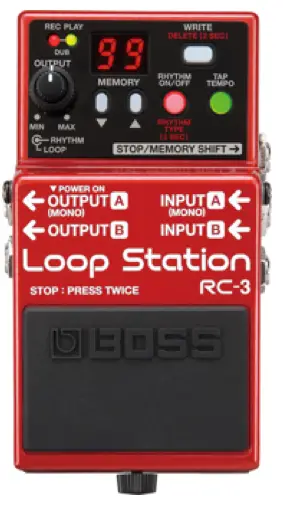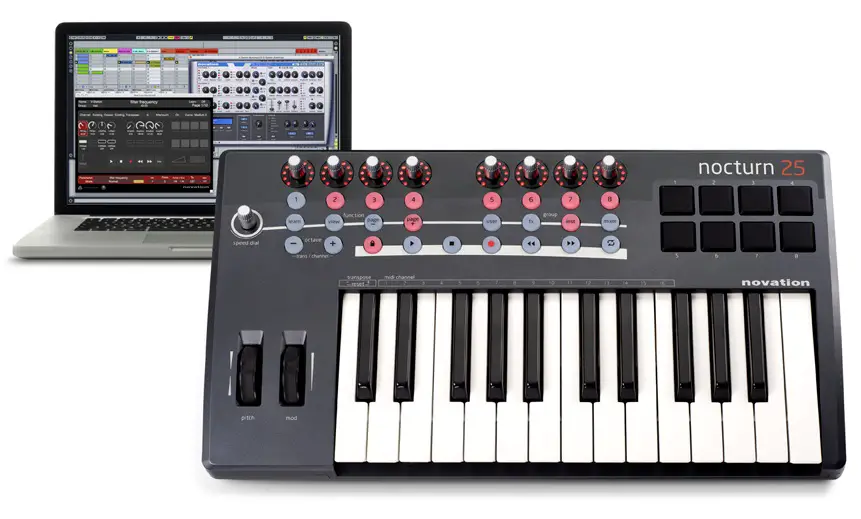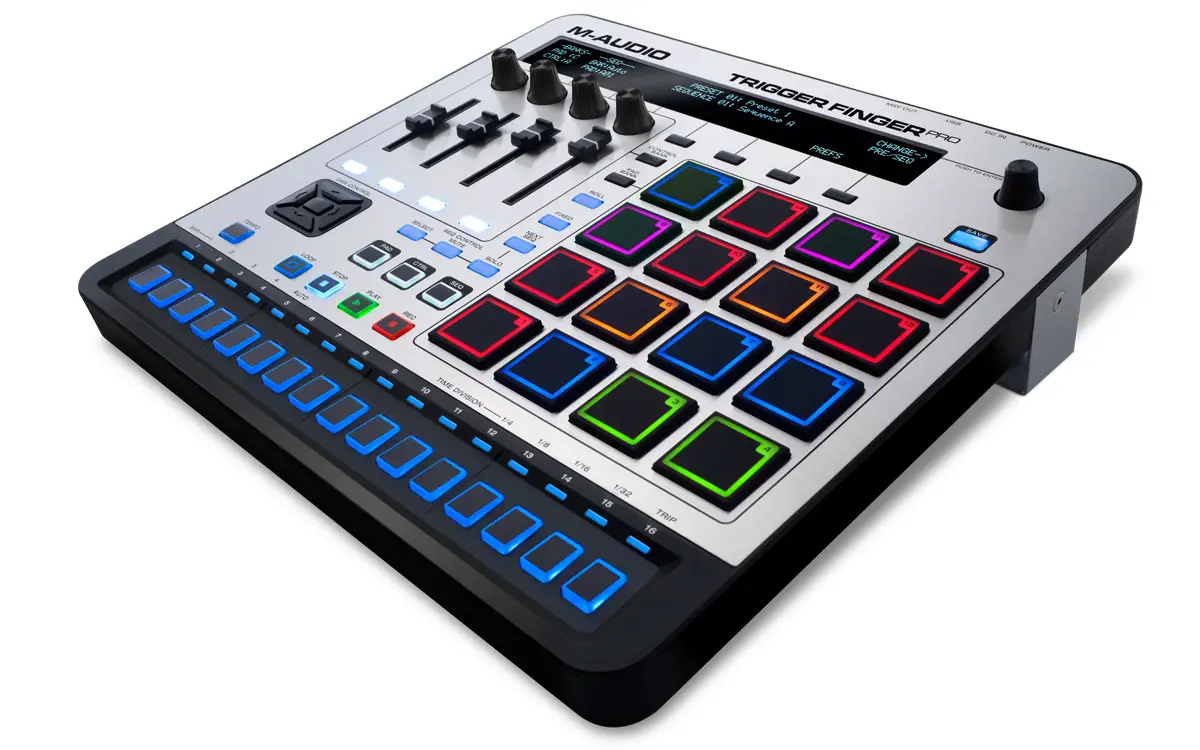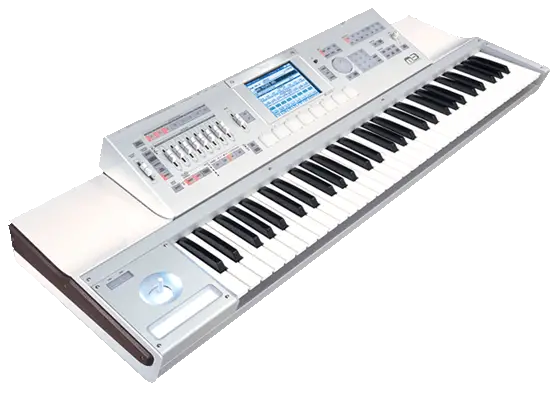A key component of modern electronic music is MIDI.
The Musical Instrument Digital Interface protocol was introduced in 1983, as a collaborative effort between major electronic instrument manufacturers including Korg, Roland and Yamaha.
MIDI allows compatible devices – usually keyboards, synthesisers, drum machines, sound modules, and computers – to communicate with one another using a standard, efficient ‘language’.
The MIDI protocol does not transmit audio, but rather information about notes, timing, and other related musical information.
Standard MIDI is a fairly simple system, though more advanced add-ons have evolved including MIDI Time Code, the Sample Dump Standard, and MIDI Show Control.
One of the first readily-available MIDI-equipped computers was the (now virtually defunct) Atari ST range of computers. STs became commonplace in both professional and home studios, but were gradually superseded by more powerful PCs and Apple Macs.
Though MIDI is most often seen on keyboard-based electronic instruments, and modular versions of these, it has also made its way onto other electro-acoustic instruments, with varying degrees of success, including guitars, cellos and drum kits.
Some mobile phones use MIDI as a basis for their ringtones.
Because MIDI does not transmit sound, just data about the sound, a MIDI track may sound quite different played on different instruments.
General MIDI was introduced in the mid-90s as an attempt to standardise commonly used sounds across different manufacturers.
MIDI is certainly not ‘old-hat’ though – there’s a thriving community and most music-related equipment, both amateur and professional, can utilise MIDI.
Resources:




2 thoughts on “What is MIDI?”